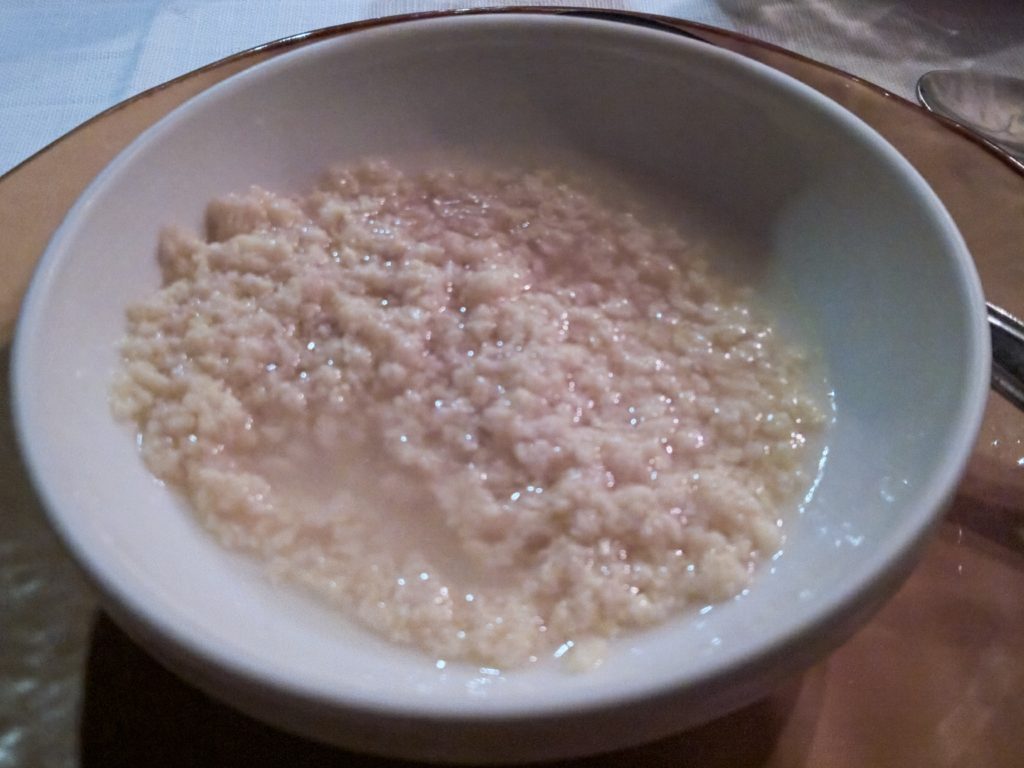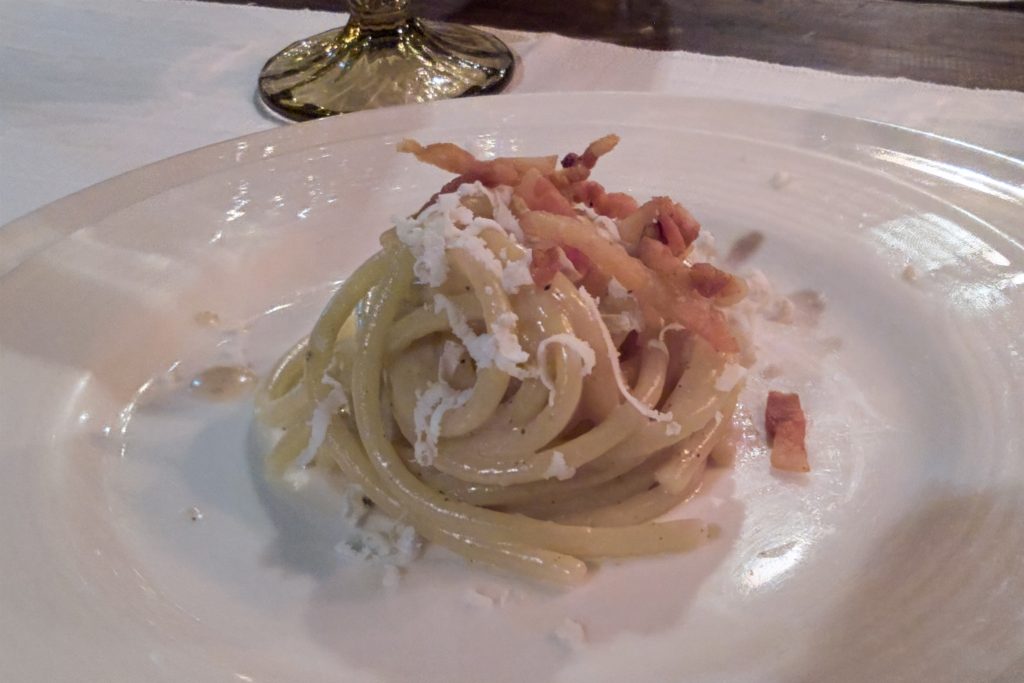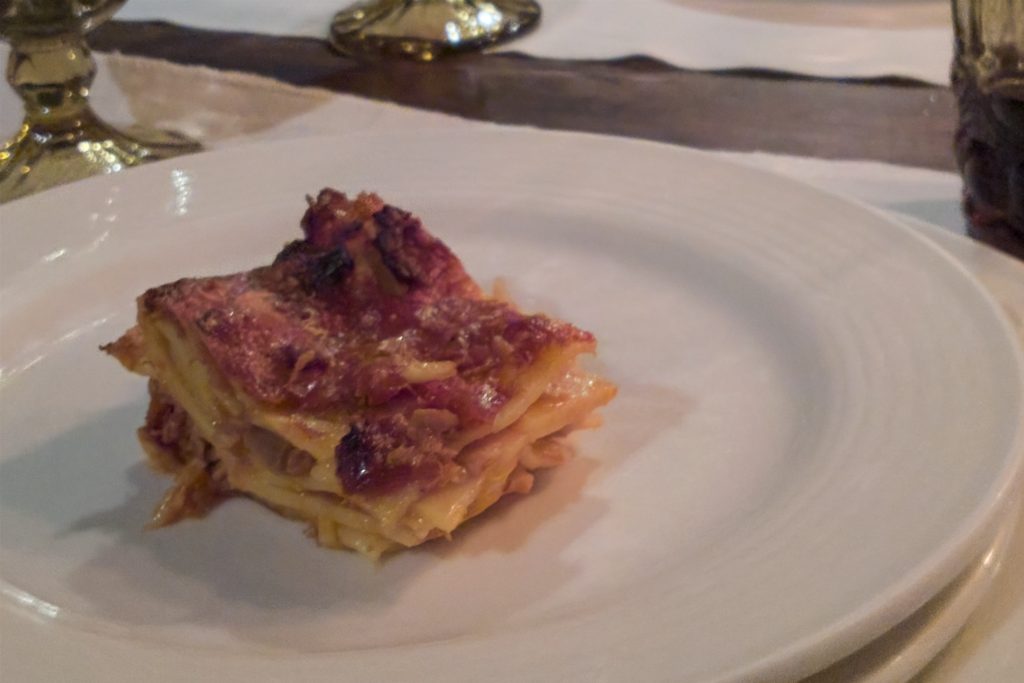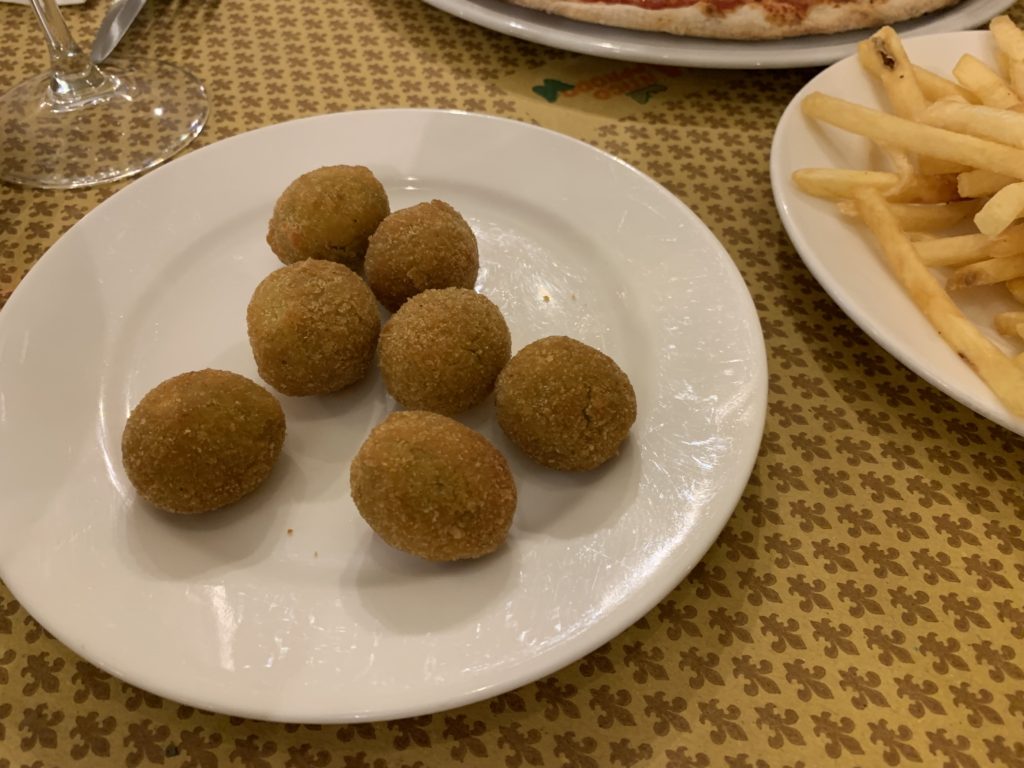Silvano came to our table and told us what was in the soup that my husband Matt and I were devouring. I mentally double-checked my translation. Chicken broth, eggs, Parmigiano, nutmeg, bread crumbs, with a little lemon. I thought I had missed an ingredient. Surely a soup this savory needed something else.
“Bread crumbs,” Silvano said in English, grinning as he raised his eyebrows.
Sì, sì, I had it right.
“An ancient recipe, from medieval times, typical of this region. It was served at wedding lunch celebrations. Stracciatella,” he said it slowly. Stra-chee-a-telllll-a.

We were eating at Picciolo di Rame, a restaurant that everyone in Le Marche had insisted we try. In a 16thcentury former olive oil mill, in a 13thcentury castle, we were surrounded by candlelight, stone walls, and the convivial conversation of the twenty-three other diners, all of us seated on three-legged stools.
Cuisine in Le Marche is as diverse as its geography. The region resembles an apostrophe—its five provinces curl around Ancona’s peninsula along the Adriatic Sea. (Ankon means ‘elbow’ in Greek.) In the eastern coastal areas, fresh seafood abounds. In the mountainous west, wild boar, game, and truffles dominate. The rolling agricultural hills in the center provide wheat, olives, poultry, pigs, produce, sheep, cattle, and more.
Picciolo di Rame is in the medieval walled hamlet of Vestignano, not far from the Sibillini Mountains. Silvano’s mother oversees the kitchen while he hosts and explains each of the 12 tasting courses typical of the Macerata province our Italian home is in. More than a memorable meal, we were also getting a local history lesson.
A few courses later we learned from Silvano that centuries before pasta alla carbonara debuted in the 1950s, Marchigiani shepherds ate pasta dei pastori alla Griscia. Shepherds on their transhumance carried guanciale (cured bacon), oil or lard, pasta, pecorino cheese, and salt. With that, they made something very similar in flavor and texture to carbonara, but without the eggs—they do not travel well.

Le Marche’s mezzadria (sharecropping) heritage that endured until the 1960s influences La Cucina Marchigiana today. Small farms dominated the landscape; one hectare (2.47 acres) per family member was the norm. The sharecroppers gave half of the farm’s proceeds to the landowner as rent. The mezzadri eked out a living with frugality, resourcefulness, and hard work. Livestock was well fed to enhance their flavor, and nothing was wasted.
Vincisgrassi is a multi-layered lasagna made with thin pasta sheets, any variety of meats, and is molto famoso in Macerata province. Labor-intensive and time consuming, it was served only on special occasions. Our eighth course at Picciolo di Rame was a harvest version, traditionally enjoyed after the wheat threshing was complete. Usually the dish is prepared the evening before and rests overnight to allow the flavors to blend. It is much lighter than American lasagne; when the chef brought out more from the kitchen, we took a second helping. (It was the crunchy corner! We could not refuse.)

In the mezzadria days, the vergara, the woman of the house, collected wild herbs daily and prepared a salad with olive oil. Foraging is not a new trend in Le Marche, it has long been a way of life. One morning, I noticed a car parked down by our grapevines. An older man with a white plastic bag was snipping something that grew wild on our property. Rather than be concerned, I wanted to ask him what it was we had worth taking. But we had an appointment; my asking in broken Italian would have taken more than the few minutes I had to spare.
A parked car along a road in the middle of nowhere is a clue you’ve found a good foraging spot. Look around and someone is collecting wild berries, herbs, nuts, beans, vegetables, or what looks like a weed, but isn’t. I hear it gets competitive.
Our tenth course was fried lamb chops, fried zucchini, and fried leeks. “Fried foods were always served at weddings.” Silvano told us. “The housewives said that frying anything made it taste good.” Fried Olive Ascolane are ubiquitous in our area, and deservedly so. Fried cream is as good as it sounds, and is a delicious starter or dessert. Fritto misto in Le Marche is incomparable to anywhere else.

The Maceratese do not finish their meals with a cheese course but with ciabuscolo, a finely ground pork salame so soft it is spreadable on bread. We managed to find room to indulge.

4 thoughts on “La Cucina Marchigiana”